Getting behind the wheel of your car and hitting the open road is a totally liberating experience. But if you’re bombarded with the sound of roadwork, honking horns, and other road noises, driving can be far from enjoyable. In fact, those loud noises that infiltrate your vehicle can be downright obnoxious and infuriating.
Don’t let those unsettling sounds drive you to road rage! With a few simple fixes, you can soundproof your vehicle and sit back, relax, and enjoy your music, conversations, or peace and quiet when you’re heading to work, running errands, or just taking a Sunday drive.
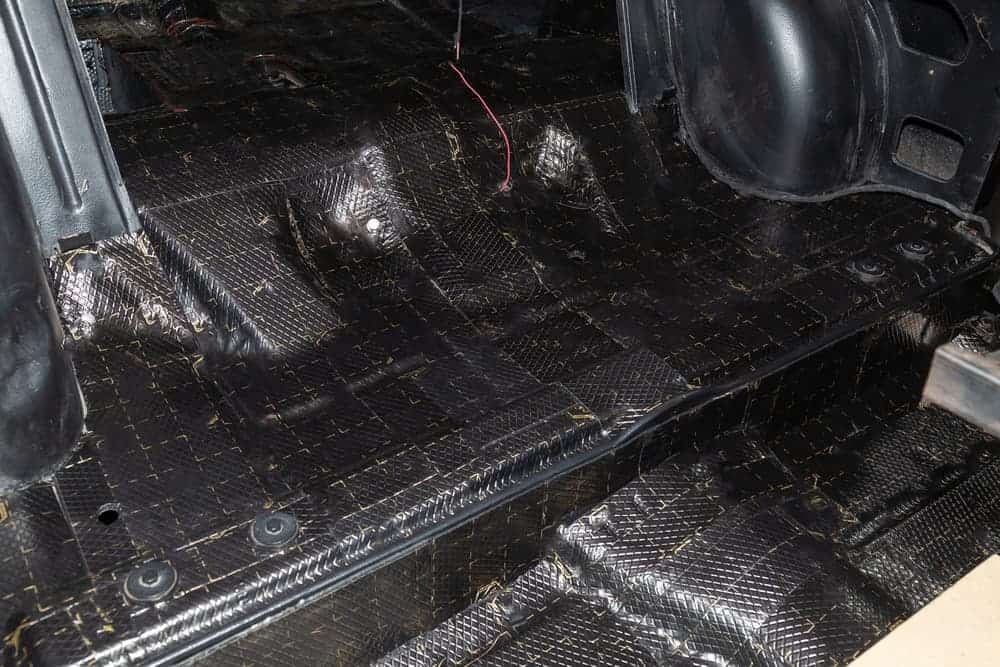
While you can effectively reduce unwanted noise, it’s important to understand that it’s impossible to eliminate all exterior noise.
Regardless of the approach you take and the materials you use, you’re going to hear some degree of sound. This is especially true in older vehicles. As such, if you’re trying to soundproof your car, you shouldn’t expect to achieve an environment that’s completely free of noise.
In fact, your goal shouldn’t be to completely eliminate all outside noise because doing so can actually be hazardous. For example, if someone is honking their horn to alert you about an out of control vehicle that’s barreling toward you and you can’t hear the warning, you could be in danger.
With that said, soundproofing your car can help to dramatically reduce the amount of outdoor noise you hear inside your vehicle; particularly noise that comes from the engine compartment and the cabin.
In fact, with the following soundproofing strategies, you can reduce the sound level in your car by approximately 50%; even more if your car is newer and well-insulated.
Now that you understand the impact that soundproofing your car can offer, let’s take a look at some of the best noise reduction methods for vehicles.
Keep in mind, the method you use depends on your particular vehicle and the specific results you are trying to achieve. Taking these things into account, here’s a look at some helpful ways to reduce noise in your car.
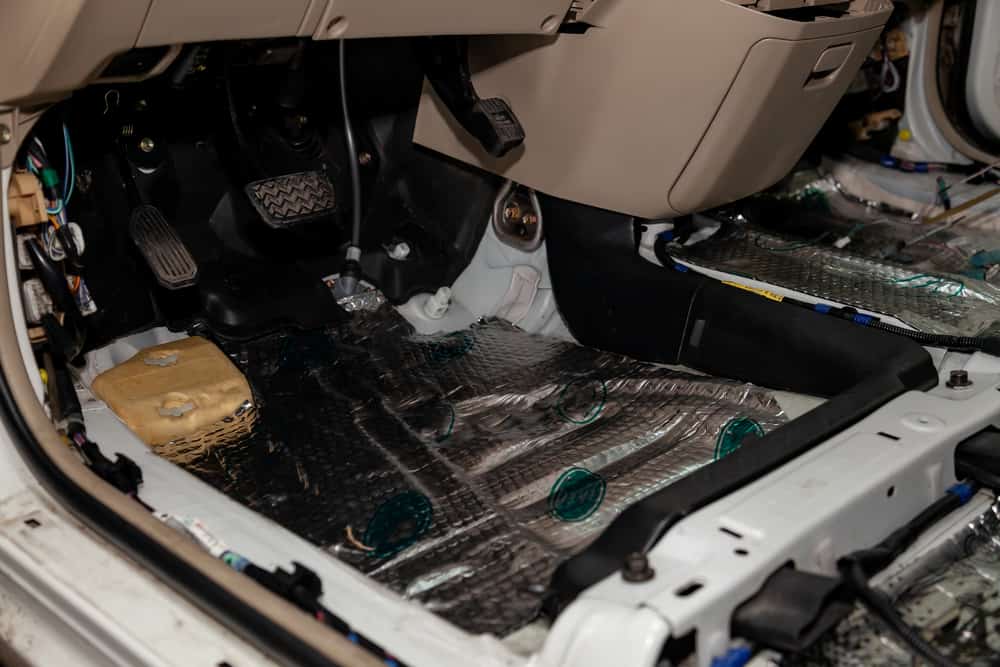
A lot of the noise that comes into your car enters through the undercarriage; that is, the floor. Believe it or not, the floor of a car isn’t as thick as one might think; plus, it’s close to the ground. These factors combined mean that road noise easily travels into a vehicle through the floor.
To minimize undercarriage noise, place dampening mats underneath your floor mats. While standard floor mats collect dirt, protect the carpeting, add comfort, and improve the aesthetics of a car, they do little for soundproofing. That’s because generally, they’re thin and aren’t made of materials that absorb sound. Damping mats, however, are made of durable, thick materials that can absorb noise and reduce resonance.
There are several types of floor damping mats available, but two of the best options include Damplifier Pro and Dynamat. These products are constructed of butyl rubber and feature a layer of foil constraint on one side with an adhesive material on the other to hold the material in place.
Installation varies from product to product. Some dampening materials have to be cut to size before being installed, while others are pre-cut and can be installed right away. Once the damping mats are positioned, you can place your floor mats on top of them.
Do note, however, that these products do tend to be costly; however, given the results they provide, they are worth the investment.
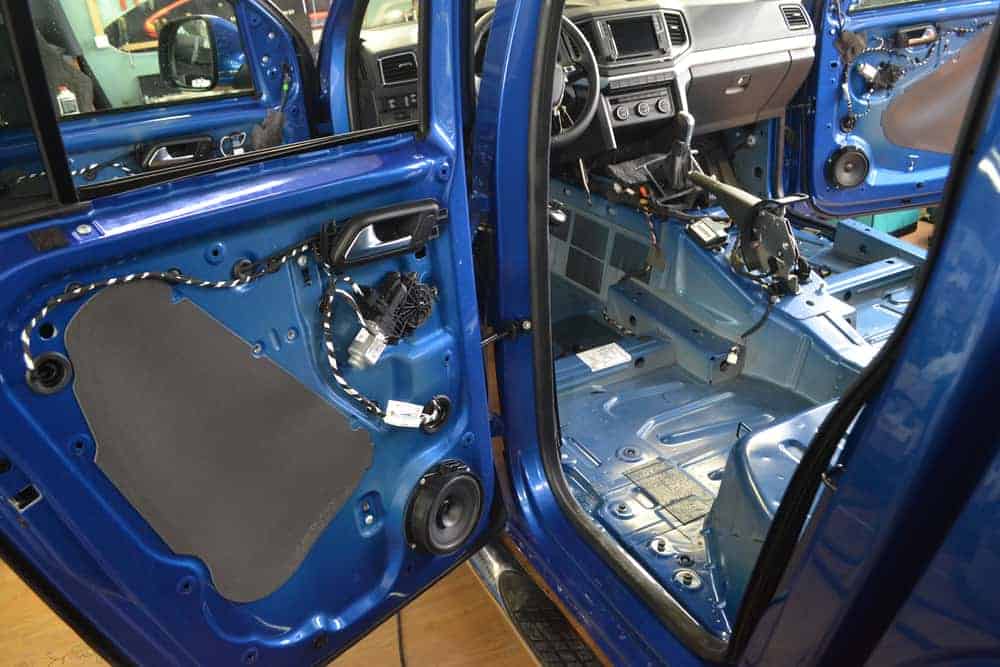
If there seems to be a lot of noise entering your car through the doors, try insulating the doors.
The doors of many makes and models of various vehicles (especially older ones) are quite thin and they have minimal – if any – insulation. In fact, often, minus the components for the door handles, locks, and windows, car door interiors are usually empty. As such, it’s no wonder why sound easily travels through them.
To combat the problem of sound traveling through your car doors, try insulating them. To insulate your car doors, you can use sound dampening materials, like those listed above that you can use to reduce undercarriage noise.
For the easiest application, we recommend using an insulation that has a peel-and-stick backing. For the absolute easiest installation, consider purchasing an all-in-one kit that comes with everything you’ll need to insulate your car doors.
Remove the screws on the interior of your car doors and measure the space. Apply those measurements to the insulation and cut it to size.
When installing the insulation, try to cover up as much of the interior of the doors as you can, but avoid covering up or obstructing any of the mechanisms within the door, such as the locks and the components that allow the windows to go up and down.
Once the insulation is in place, reattach the interior panels, taking car to replace and properly secure all screws.
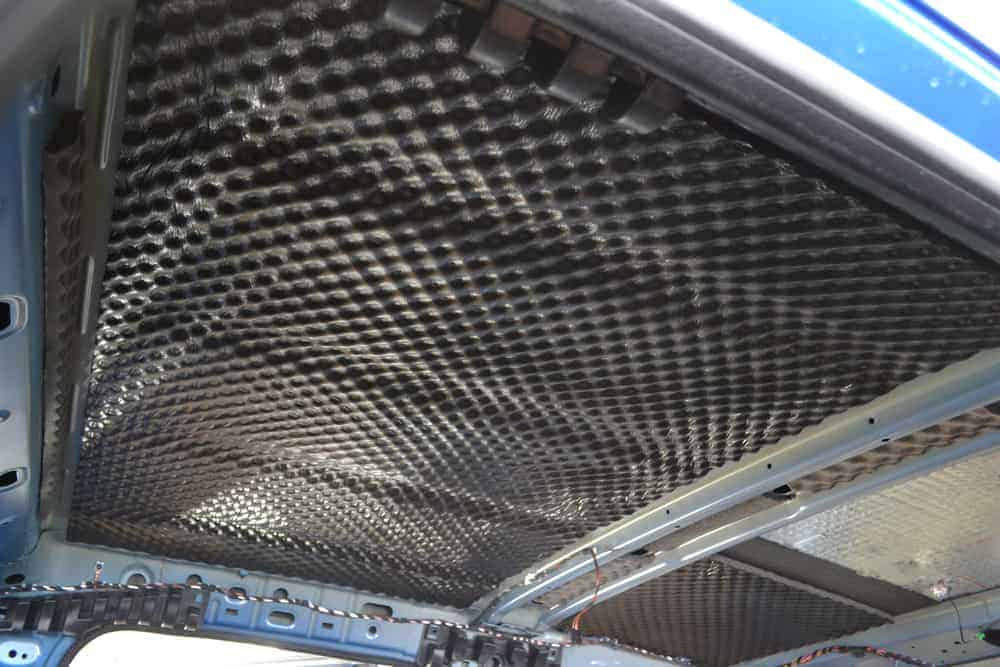
Like the doors, a car’s roof has minimal – if any – insulation. By applying insulation, you can cut out a lot of the wind noise that transfers through the vehicle, creating a quieter ride. Plus, insulating the roof also helps to prevent heat from entering the car, thereby making your vehicle more comfortable to drive.
To insulate the roof, use a sound deadening material, such as those listed above. Again, we recommend using a material that has a peel-and-stick backing for the easiest installation.
Remove the cloth headliner, using caution to avoid damaging the material, as you’ll need to reapply it after you install the insulation. Next, measure the roof, apply the measurements to the sound deadening material, and cut to size.
Before applying the insulation, wipe the roof down with rubbing alcohol and a clean cloth. Doing so will remove dirt and debris, allowing for better adhesion. Once the insulation is in place, reapply the cloth headliner using adhesive.
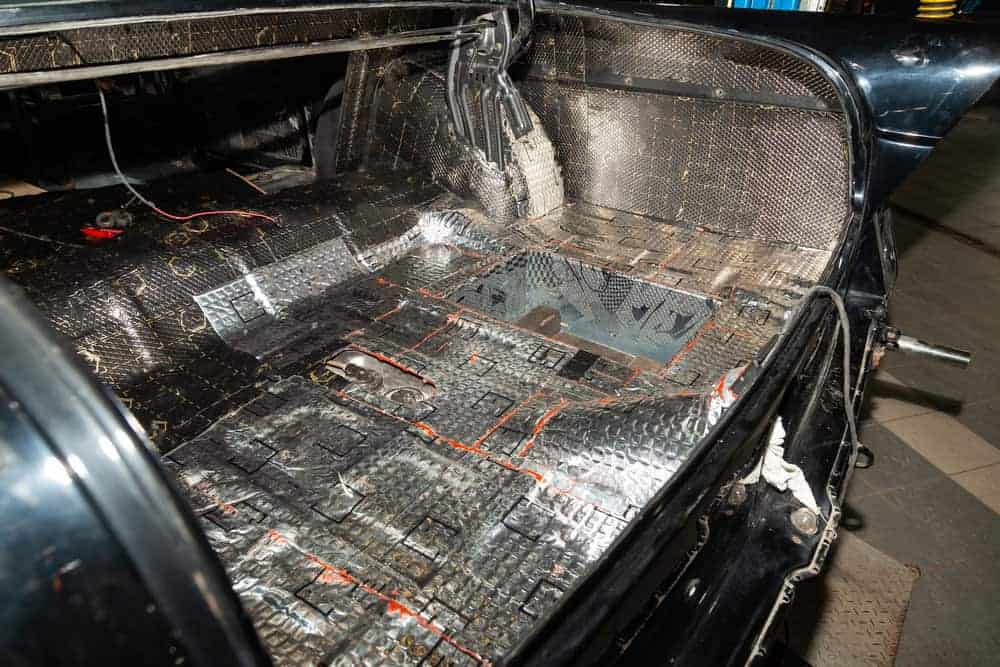
Like the undercarriage, the doors, and the roof, noise can travel into your vehicle’s cabin through the trunk. To cut out unwanted noise, install a sound dampening material along the sides and bottom of the trunk.
Use a high-quality sound deadening material, and apply it in the same manner as described above. Remove all items from your trunk, as well as the carpeting that may be on the floor. Measure the spaces you want to cover, transfer the measurement to the material, cut it to size, and secure it in place.

Believe it or not, the tires you’re currently riding on could be contributing to the noise you’re hearing in your car.
In fact, tires have a huge impact on road noise. That’s because they’re the only part of your car that touches the ground, so the vibrations from the road, pebbles, dirt, and everything else you drive over – as well as the tires themselves – travel right through the tires and into your car. Therefore, changing out the tires can effectively quiet your ride.
When you’re shopping for tires for the express purpose of minimizing noise in your car, there are some factors that you’re going to want to keep in mind, including:
While low-profile tires may be aesthetically pleasing, they’re the worst for sound traveling into your car.
The minimal amount of rubber between the metal of the wheels and your vehicle means that these tires pick up virtually every sound, and that sound is going to travel right into the carriage of your car.
When it comes to minimizing noise, the more rubber the better, as he rubber absorbs sound and acts as a cushion between your vehicle, the road, and the vibrations between the two.
The wider the tires, the more contact the tires have with the road. The more contact the tires have with the road, the more vibrations your tires will pick up, and the more noise you’ll hear in the car.
To reduce noise, opt for the narrowest wheels your car can support. Your owner’s manual should indicate how thin you can safely go.
The majority of tires made by reputable manufactures now feature a noise rating. This includes the decibel rating and a three-wave symbol.
The decibel rating indicates the amount of decibels that the manufacturer recorded when testing the tires; the lower the decibel rating, the better.
With the three-wave symbol rating, a single line means great performance and minimal noise, while three waves means poor performance and high levels of noise.
If excessive road noise is taking the joy out of driving, try using the above-mentioned strategies to soundproof your car. While they may not completely eliminate all noise (which you shouldn’t try to do, anyway), they can certainly make your car significantly quieter.

Snoringsource.com is a participant in the Amazon Services LLC Associates Program, an affiliate advertising program designed to provide a means for website owners to earn advertising fees by advertising and linking to amazon(.com, .co.uk, .ca etc) and any other website that may be affiliated with Amazon Service LLC Associates Program.